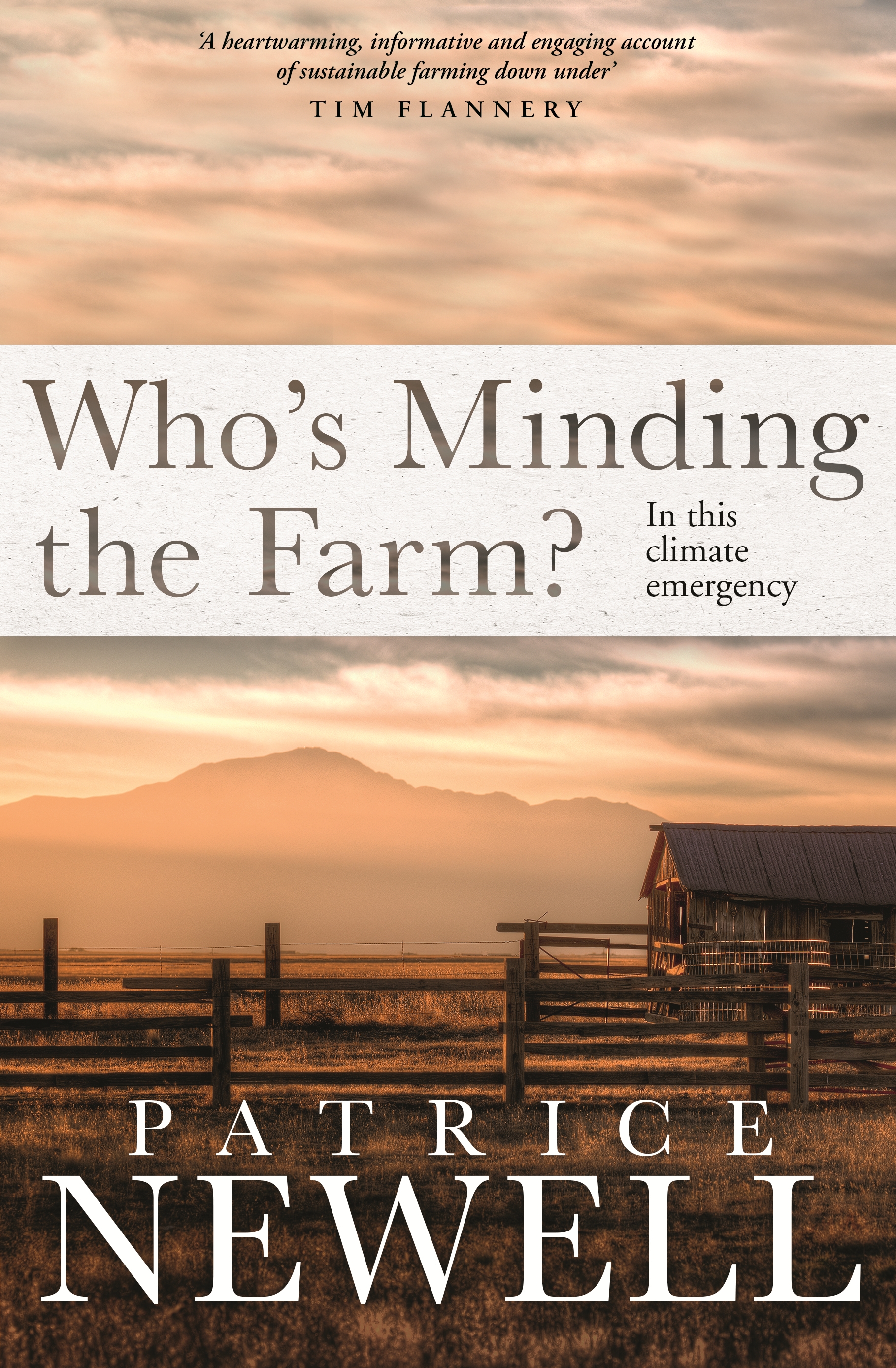 Reviewed by Magdalena Ball
Reviewed by Magdalena Ball
Who’s Minding the Farm
In this Climate Emergency
by Patrice Newell
Penguin
18 June 2019, ISBN: 9780143789390, Trade Paperback, 304 pages, aud$35rrp
The link between modern agricultural practices and anthropogenic climate change is becoming increasingly obvious. Not only are most commercial production practices, particularly the raising of livestock, unsustainable, but farmers are in the direct line of climate changes, with wide-scale drought, flooding in some areas, fire, and other immediate climate impacts already causing major issues. We cannot currently survive in this world without agriculture–our food needs are dependent on farmers, but we all know that our food system must change quickly, if humans (and other creatures) are to survive as a race. As both scientist and farmer, Patrice Newell understands this conundrum all too well. Newell has a PhD in environmental science and her thesis involved the testing of a slow pyrolysis technology called a continuous biomass converter on her own 4,000 acre commercial farm, Elmswood. Newell has been managing Elmswood since 1986, when she gave up a career in media to produce organic garlic, olive oil, honey and beef. Her doctorate, which provides a high potential solution to reduce Greenhouse Gas emissions and draw down CO₂ through slow pyrolysis presents one way in which technology and agricultural practices could work together towards improving soils. In Who’s Minding the Farm, Newell explains this method, as well as other possible solutions against the context of the current agricultural crisis and the climate emergency faced by all of us, beginning with the arrival of First Fleet in 1788:
Environmental damage began in Australia with the First Fleeter of 1788, who were met with the gift of clean water, trees galore for timber, and beckoning grasslands. What could possibly go wrong? Tragically almost everything, from day one. (14)
Who’s Minding the Farm is part memoir, part analysis/call-to-action. It is beautifully written, in clear, easy to follow language suitable for a layperson, and is full of stories from Newell’s own experiences, from a lack of water (and indeed, the beautiful “glamour girl” purple garlic, olive oil and olives are all unavailable at the moment due to drought), the frustration of political inaction: “Rural Neros fiddling while Rome burns”, erosion, pollution, land degradation of all varieties, rising suicide statistics amongst farmers, managing bee hives, to the role of good farm managers and partners. Who’s Minding the Farm not only provides a sensitive and deep exploration of the colonial background and abuse of Australian soil including the impact of our ongoing subsidisation of the fossil-fuel industry, but also provides a range of suggestions around what we can all do now to increase our chances of healing the soil and feeding ourselves as the world continues to move deeper into climate emergency. The book is grounded in a thorough respect for soil and the ways in which it is used:
We all have to learn to tread more lightly on the land. Even gentle tiling releases carbon from the earth. We know that soil stores carbon, we know how to increase it and we’re learning to measure it, to take into account in the endless arguments about emissions. As much as solar, wind, tidal, geothermal and other non-fossil fuels, it’s soil that matters. The earth can literally save the Earth. (171-2)
Ultimately, the target reader for Who’s Minding the Farm is farmers. The book goes into a reasonable amount of detail on how to enrich, rather than degrade the soil, dealing with short-term labour like WWOOFers (organic farm volunteers), biodiversity, predators, rural mental health, and the tension between new technologies and Australia’s ongoing obsession with fossil fuels:
This coal mining boom won’t leave an architectural legacy like the gold rush provided for the likes of Ballarat, Bendigo and Beechworth. While coal build Newcastle, for all towns north, this latest boom meant money for individuals, not community structures. In a hundred years there’ll be little architectural evidence there was a regional coal and gas boom at the end of the twentieth and start of the twenty-first century at all. Except vistas of desolation. (228)
As Newell eloquently points out, farming practices impact on a broad range of stakeholders, from local communities to towns, states, and even countries. All readers have something to learn from this book, as agriculture is at the frontline of our emergency. Solutions like urban gardens, biochar, renewable energies, waste and water management, and the decisions that our government makes about which types of mining are going to be supported are all connected. Newell makes a very strong, evidence-based case for treating these issues in a collective, related ways and her suggestions are both relevant and well-researched. Who’s Minding the Farm is both a personal, and engaging story and an important read for anyone who wants to better understand what it’s like to manage an organic farm, and to advocate on behalf of this increasingly fragile planet we live on.